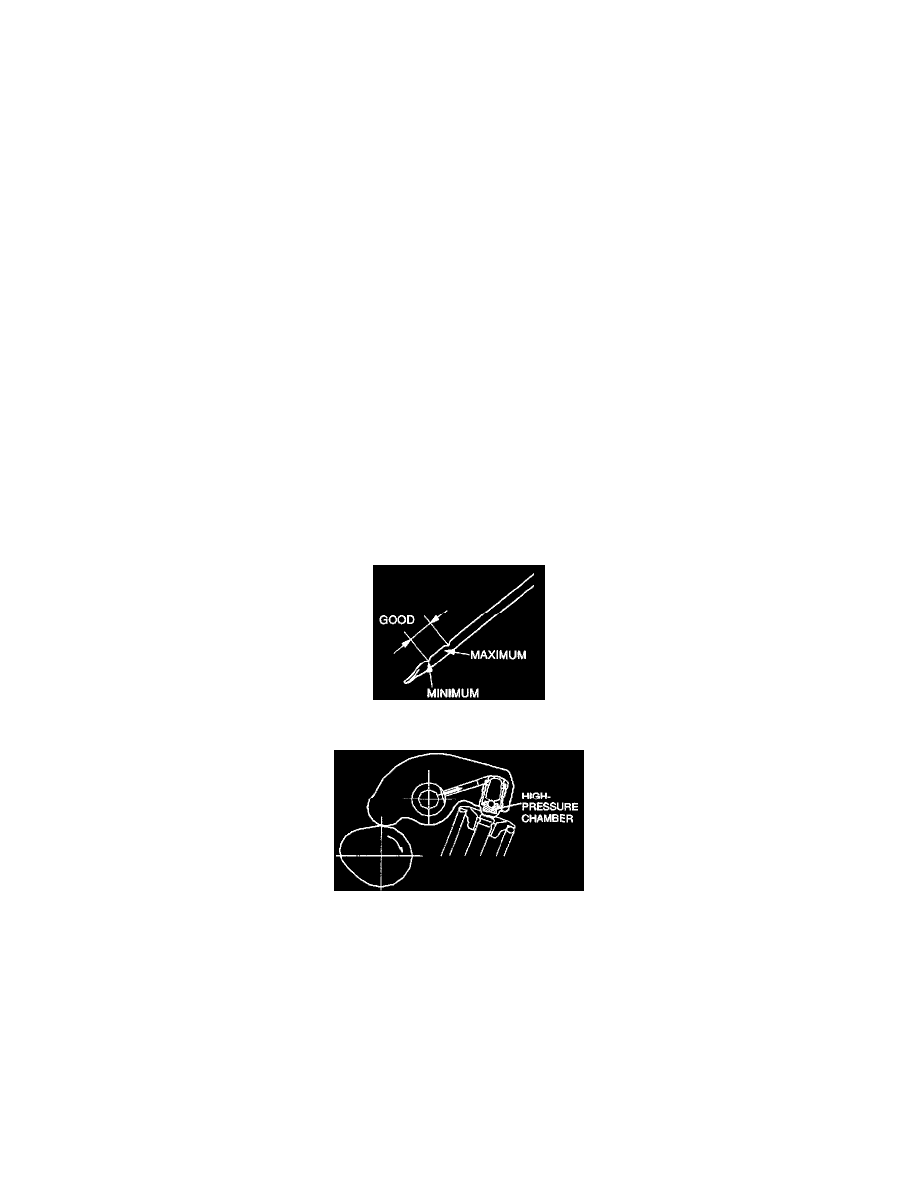Montero Sport XLS 4WD V6-3.5L SOHC (2002)

Lifter / Lash Adjuster: Testing and Inspection
LASH ADJUSTER CHECK
If an abnormal noise (chattering noise) suspected to be caused by malfunction of the lash adjuster is produced immediately after starting the engine
and does not disappear, perform the following check.
NOTE:
^
An abnormal noise due to malfunction of the lash adjuster is produced immediately after starting the engine and changes with the engine speed,
irrespective of the engine load. If, the abnormal noise is not produced immediately after starting the engine or does not change with the engine
speed, or it changes with the engine load, the lash adjuster is not the cause for the abnormal noise.
^
When the lash adjuster is malfunctioning, the abnormal noise is rarely eliminated by continuing the warming-up of the engine at idle speed.
However, the abnormal noise may disappear only when seizure is caused by oil sludge in the engine whose ad is not maintained properly.
1. Start the engine.
2. Check if the abnormal noise produced immediately after starting the engine, changes with the change in the engine speed. If the abnormal noise is
not produced immediately after starting the engine or it does not change with the engine speed, the lash adjuster is not the cause for the noise.
Therefore, investigate other causes. The abnormal noise is probably caused by some other parts than the engine proper if it does not change with
the engine speed. (In this case, the lash adjuster is in good condition.)
3. With the engine idling, change the engine load (shift from N to D range, for example) to make sure that there is no change in the level of abnormal
noise. If there is a change in the level of abnormal noise, suspect a tapping noise due to worn crankshaft bearing or connecting rod bearing (In this
case, the lash adjuster is in good condition.).
4. After completion of warm-up, run the engine at idle to check for abnormal noise. If the noise is reduced or disappears, clean the lash adjuster. As it
is suspected that the noise is due to seizure of the lash adjuster. If there is no change in the level of the abnormal noise, proceed to step 5.
5. Run the engine to bleed the lash adjuster system.
6. If the abnormal noise does not disappear after air bleeding operation, clean the lash adjuster.
Bleeding lash adjuster system
NOTE: Parking the vehicle on a grade for a long time may decrease oil in the lash adjuster, causing air to enter the high pressure chamber when
starting the engine. After parking for many hours, oil may run out from the of passage and take time before oil is supplied to the lash adjuster, causing
air to enter the high pressure chamber. In the cases, abnormal noise can be eliminated by bleeding the lash adjuster system.
1. Check engine oil and add or change oil if required.
NOTE:
^
If the engine oil level is low, air is sucked from the oil screen, causing air to enter the oil passage.
^
If the engine oil level is higher than specification, oil may be stirred by the crankshaft, causing oil to be mixed with a large quantity of air.
^
If oil is deteriorated, air is not easily separated from oil, increasing the quantity of air contained in oil.
^
If air mixed with oil enters the high pressure chamber inside the lash adjuster from the causes, air in the high pressure chamber is compressed
excessively while the valve is opened, resulting in an abnormal noise when the valve closes. This is the same phenomenon as that observed
when the valve clearance has become excessive. The lash adjuster can resume normal function when air entered the lash adjuster is removed.
2. Idle the engine for one to three minutes to warm it up.
